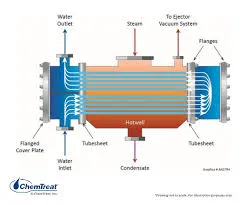- Afrikaans
- Albanian
- Amharic
- Arabic
- Armenian
- Azerbaijani
- Basque
- Belarusian
- Bengali
- Bosnian
- Bulgarian
- Catalan
- Cebuano
- China
- China (Taiwan)
- Corsican
- Croatian
- Czech
- Danish
- Dutch
- English
- Esperanto
- Estonian
- Finnish
- French
- Frisian
- Galician
- Georgian
- German
- Greek
- Gujarati
- Haitian Creole
- hausa
- hawaiian
- Hebrew
- Hindi
- Miao
- Hungarian
- Icelandic
- igbo
- Indonesian
- irish
- Italian
- Japanese
- Javanese
- Kannada
- kazakh
- Khmer
- Rwandese
- Korean
- Kurdish
- Kyrgyz
- Lao
- Latin
- Latvian
- Lithuanian
- Luxembourgish
- Macedonian
- Malgashi
- Malay
- Malayalam
- Maltese
- Maori
- Marathi
- Mongolian
- Myanmar
- Nepali
- Norwegian
- Norwegian
- Occitan
- Pashto
- Persian
- Polish
- Portuguese
- Punjabi
- Romanian
- Russian
- Samoan
- Scottish Gaelic
- Serbian
- Sesotho
- Shona
- Sindhi
- Sinhala
- Slovak
- Slovenian
- Somali
- Spanish
- Sundanese
- Swahili
- Swedish
- Tagalog
- Tajik
- Tamil
- Tatar
- Telugu
- Thai
- Turkish
- Turkmen
- Ukrainian
- Urdu
- Uighur
- Uzbek
- Vietnamese
- Welsh
- Bantu
- Yiddish
- Yoruba
- Zulu
Sep . 01, 2024 10:02 Back to list
FRC Concrete Pipe Mold - Bottom Ring for Durable Construction
Understanding FRC Concrete Pipe Molds Focus on the Bottom Ring
Fiber-Reinforced Concrete (FRC) has gained significant traction in civil engineering due to its enhanced durability and strength. One of the key applications of FRC is in the production of concrete pipes, which are vital for various infrastructure projects, including drainage systems, sewers, and water supply lines. At the heart of the production process lies the mold, particularly the bottom ring mold, which plays a crucial role in shaping the concrete pipe.
The bottom ring mold is essential for ensuring that the pipe maintains its structural integrity and meets the required specifications. This component is responsible for shaping the bottom part of the pipe, which often experiences significant stress when in use. Therefore, it must be precisely designed to withstand both the pressure from the concrete and the stresses experienced in the field.
Design Considerations for the Bottom Ring
When designing a bottom ring mold for FRC concrete pipes, several factors must be taken into account
1. Material Selection The mold must be made from robust materials that can handle the harsh environment of concrete production. Steel and reinforced polymers are common choices due to their strength and resistance to wear.
2. Dimensional Accuracy The mold must be manufactured with high precision to ensure that the finished pipe meets the required dimensions. Any discrepancies can lead to installation issues and affect the overall performance of the pipe.
frc concrete pipe mold/mould bottom ring

3. Ease of Removal A well-designed bottom ring mold should allow for easy removal of the cured concrete pipe without damaging its surface. This aspect is crucial for maintaining the aesthetic quality and structural integrity of the finished product.
4. Reinforcement Features Incorporating features that facilitate the use of fiber reinforcement in the concrete mix can enhance the overall performance of the pipe. This might include grooves or channels within the mold that guide the placement of fiber reinforcement materials.
Production Process
The process begins with the preparation of the mold, which is cleaned and coated with a release agent to prevent sticking. Once the bottom ring mold is ready, it is assembled with the other components of the pipe mold. The concrete mix, often infused with fibers for added strength, is then poured into the mold.
After curing for the required duration, the mold is removed carefully. The quality of the bottom ring is assessed to ensure it meets the necessary standards. Any imperfections can lead to compromised performance when the pipe is installed in real-world applications.
Conclusion
In conclusion, the bottom ring mold is a vital component in the production of FRC concrete pipes. Its design and application directly impact the pipe's durability and performance. Understanding the importance of this mold allows manufacturers to optimize their production processes, ultimately leading to better infrastructure solutions that can withstand the rigors of use. With advances in mold technology and materials, the future of FRC concrete pipes looks promising, paving the way for more resilient construction practices.
-
8mm Thin-Walled Cast Steel Manhole Cover Pallet Bottom Ring | Durable
NewsAug.04,2025
-
Premium Cast Iron Water Main Pipe: Durable, Corrosion-Resistant
NewsAug.03,2025
-
Durable Cast Iron Water Mains | AI-Optimized Systems
NewsAug.02,2025
-
High-Efficiency Propane Boiler for Baseboard Heat | Save Energy
NewsAug.01,2025
-
Premium Source Suppliers for Various Gray Iron Castings
NewsJul.31,2025
-
Durable Cast Iron Water Main Pipes | Long-Lasting
NewsJul.31,2025


